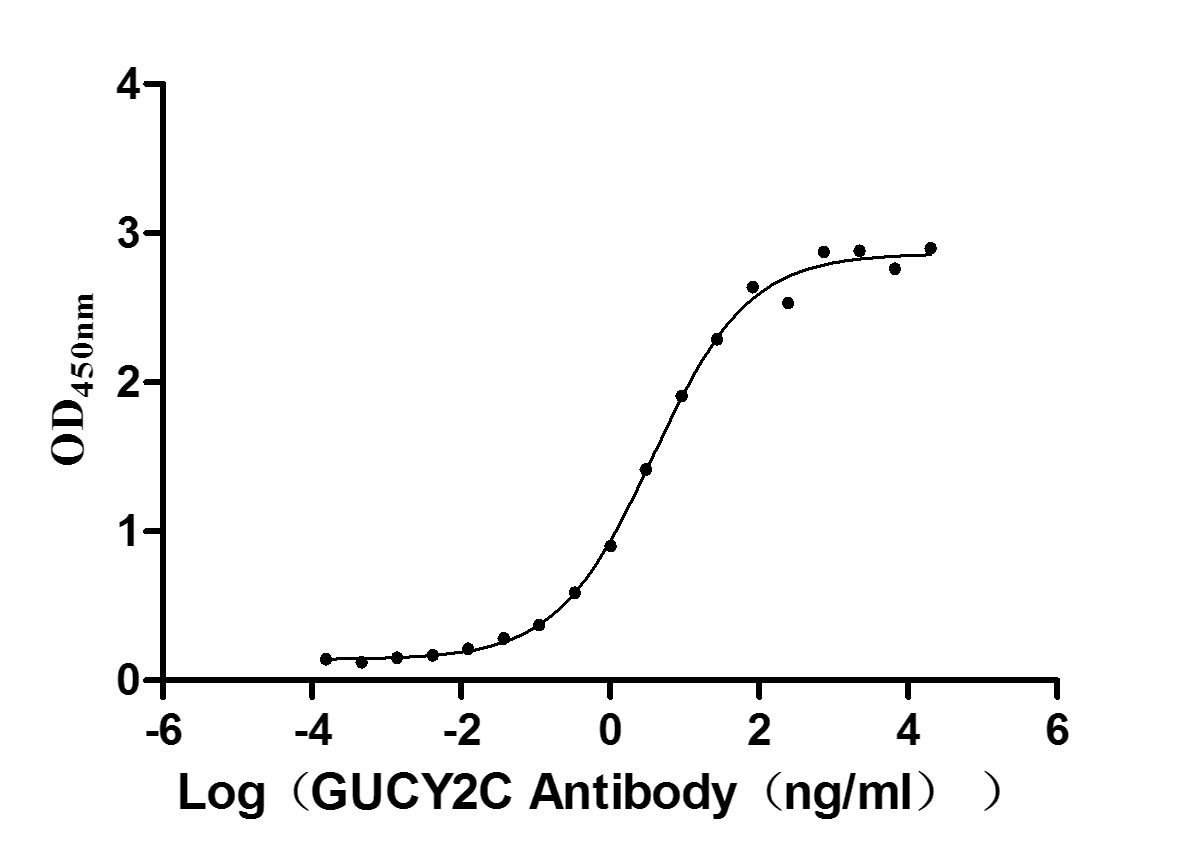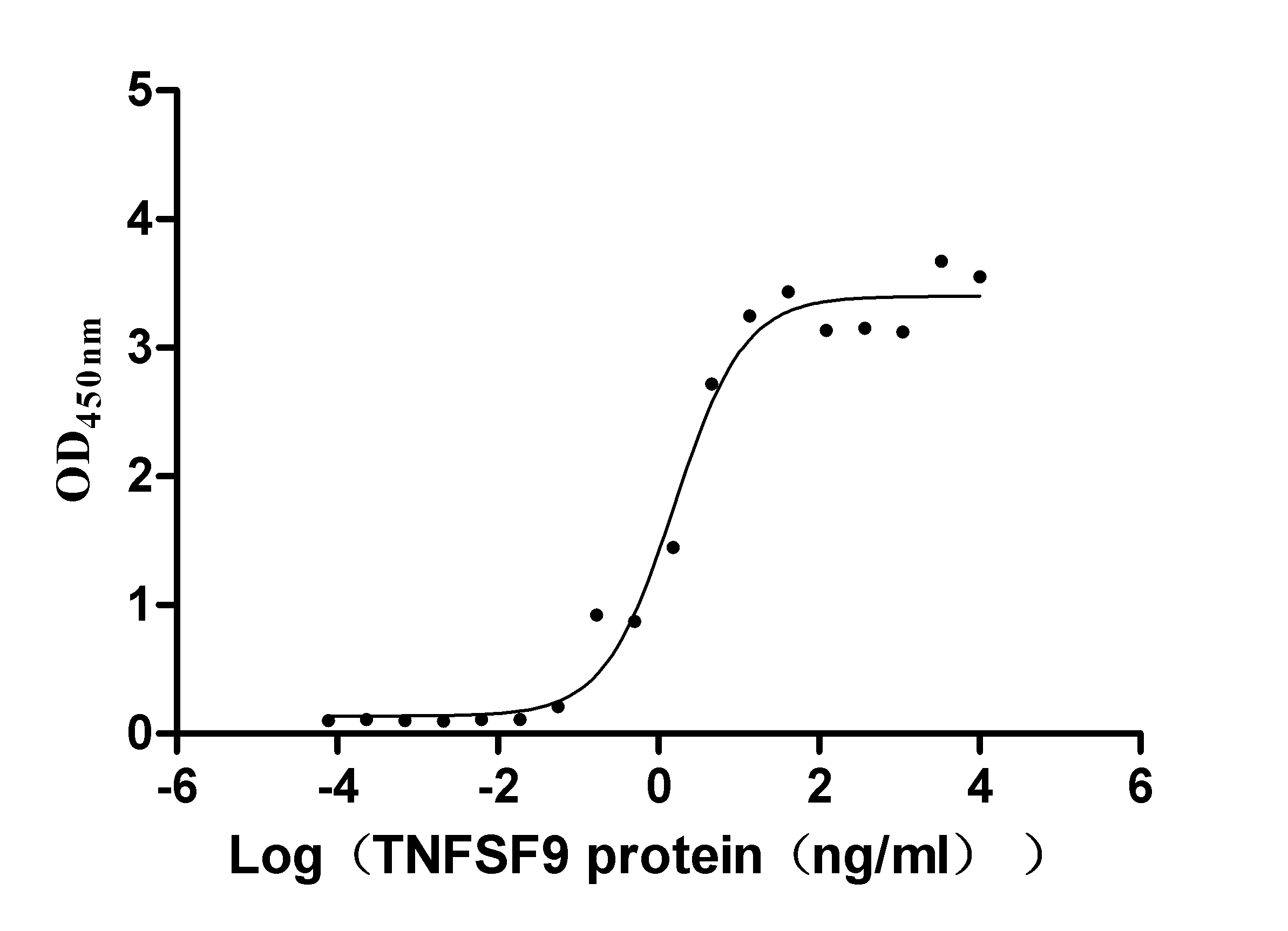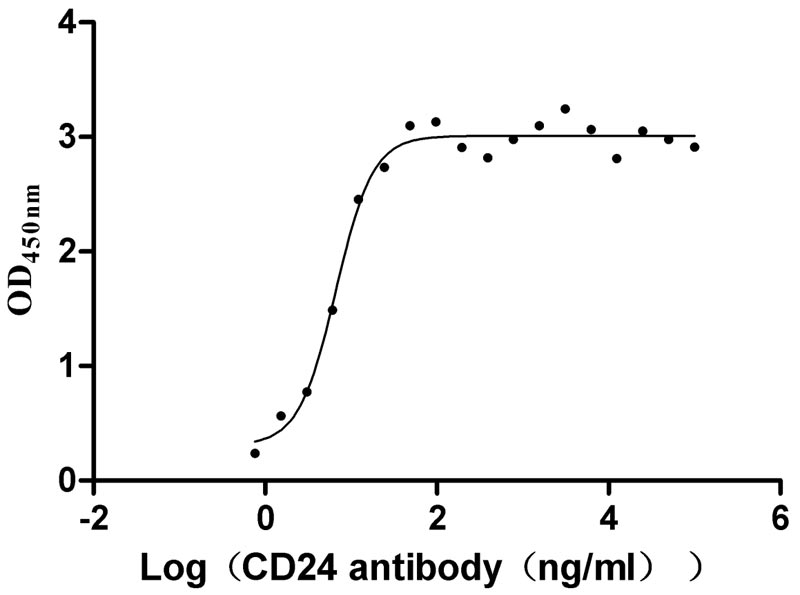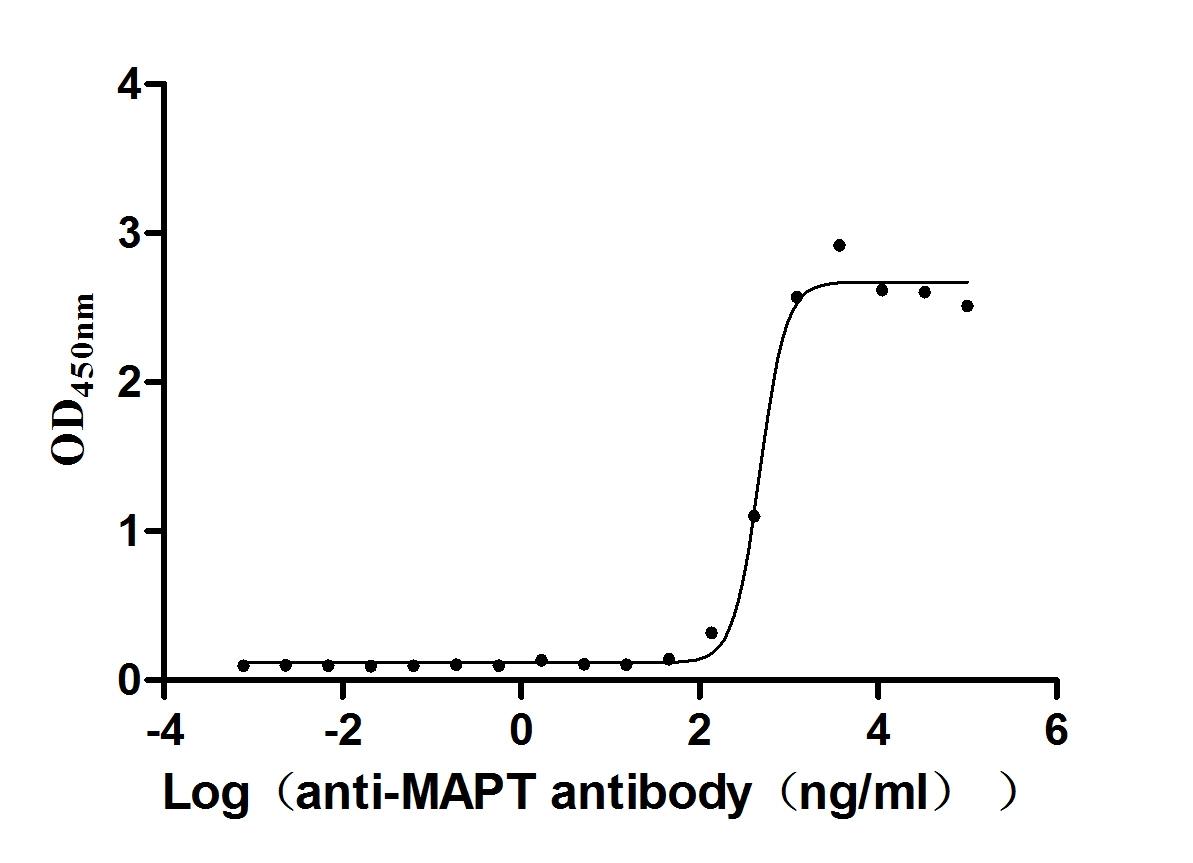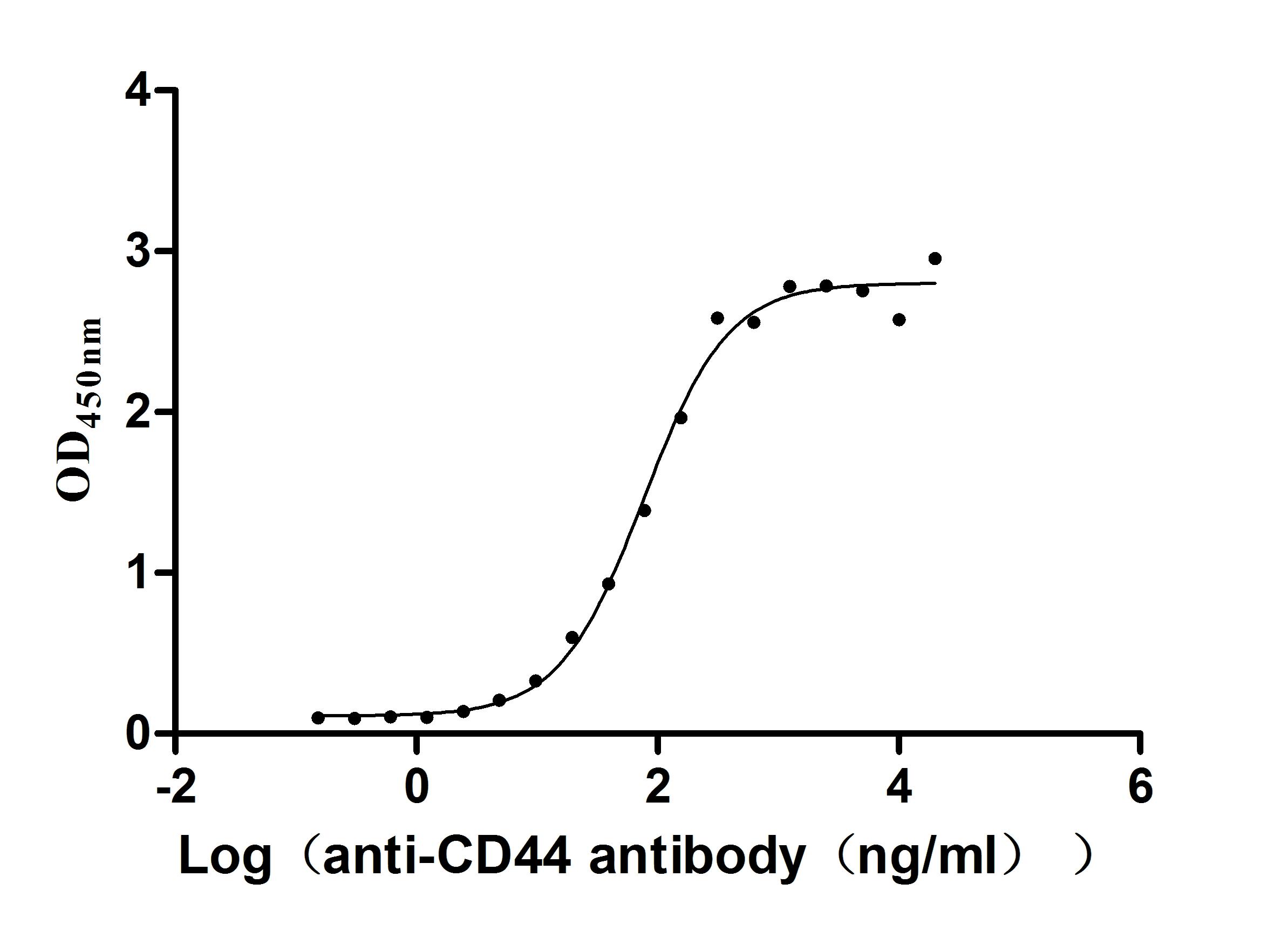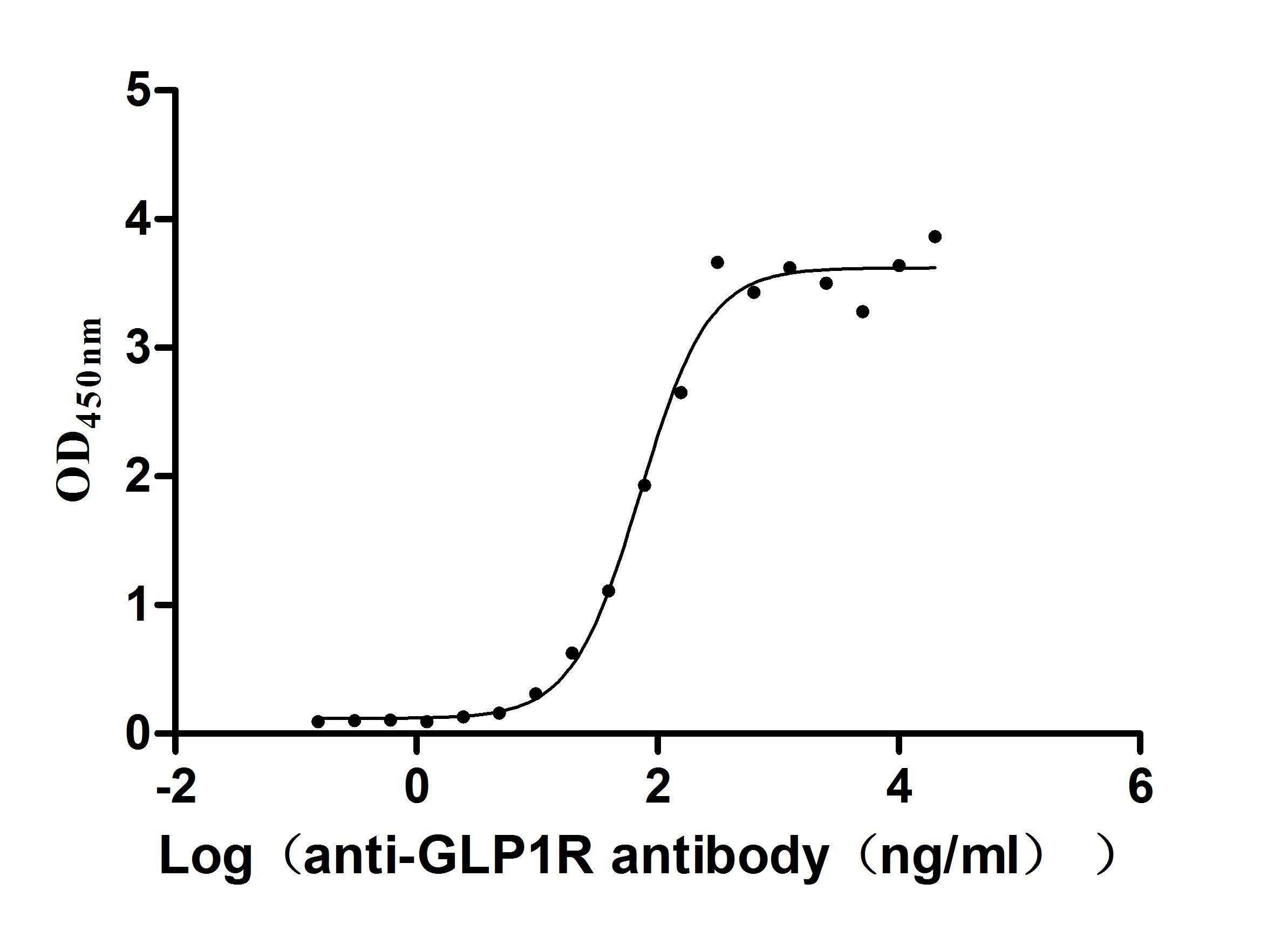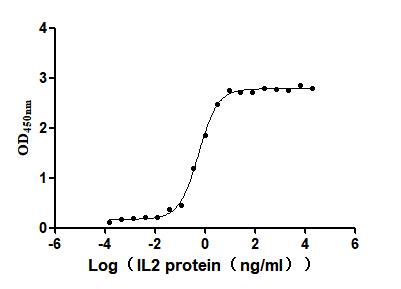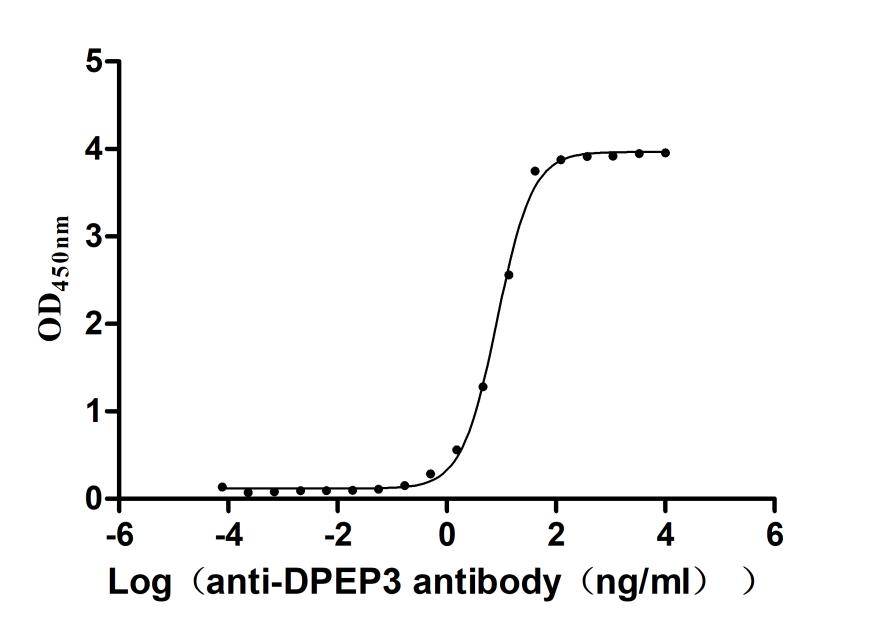Recombinant Salmonella typhimurium Ethanolamine utilization protein EutL (eutL)
-
中文名稱:鼠傷寒沙門菌eutL重組蛋白
-
貨號:CSB-EP358047SXB-B
-
說明書:
-
規格:
-
來源:E.coli
-
共軛:Avi-tag Biotinylated
E. coli biotin ligase (BirA) is highly specific in covalently attaching biotin to the 15 amino acid AviTag peptide. This recombinant protein was biotinylated in vivo by AviTag-BirA technology, which method is BriA catalyzes amide linkage between the biotin and the specific lysine of the AviTag.
-
其他:
產品詳情
-
純度:>85% (SDS-PAGE)
-
基因名:eutL
-
Uniprot No.:
-
別名:eutL; STM2456Ethanolamine utilization protein EutL
-
種屬:Salmonella typhimurium (strain LT2 / SGSC1412 / ATCC 700720)
-
蛋白長度:full length protein
-
表達區域:1-219
-
氨基酸序列MPALDLIRPS VTAMRVIASV NDGFARELKL PPHIRSLGLI TADSDDVTYI AADEATKQAM VEVVYGRSLY AGAAHGPSPT AGEVLIMLGG PNPAEVRAGL DAMVASIENG AAFQWANDAE NTAFLAHVVS RTGSYLSSTA GIALGDPMAY LVAPPLEATF GIDAAMKSAD VQLVTYVPPP SETNYSAAFL TGSQAACKAA CNAFTDAVLD IARNPVQRA
-
蛋白標簽:Tag?type?will?be?determined?during?the?manufacturing?process.
The tag type will be determined during production process. If you have specified tag type, please tell us and we will develop the specified tag preferentially. -
產品提供形式:Lyophilized powder Warning: in_array() expects parameter 2 to be array, null given in /www/web/cusabio_cn/public_html/caches/caches_template/default/content/show_product_protein.php on line 662
Note: We will preferentially ship the format that we have in stock, however, if you have any special requirement for the format, please remark your requirement when placing the order, we will prepare according to your demand. -
復溶:We recommend that this vial be briefly centrifuged prior to opening to bring the contents to the bottom. Please reconstitute protein in deionized sterile water to a concentration of 0.1-1.0 mg/mL.We recommend to add 5-50% of glycerol (final concentration) and aliquot for long-term storage at -20℃/-80℃. Our default final concentration of glycerol is 50%. Customers could use it as reference.
-
儲存條件:Store at -20°C/-80°C upon receipt, aliquoting is necessary for mutiple use. Avoid repeated freeze-thaw cycles.
-
保質期:The shelf life is related to many factors, storage state, buffer ingredients, storage temperature and the stability of the protein itself.
Generally, the shelf life of liquid form is 6 months at -20°C/-80°C. The shelf life of lyophilized form is 12 months at -20°C/-80°C. -
貨期:Delivery time may differ from different purchasing way or location, please kindly consult your local distributors for specific delivery time.Note: All of our proteins are default shipped with normal blue ice packs, if you request to ship with dry ice, please communicate with us in advance and extra fees will be charged.
-
注意事項:Repeated freezing and thawing is not recommended. Store working aliquots at 4°C for up to one week.
-
Datasheet :Please contact us to get it.
靶點詳情
-
功能:A component of the bacterial microcompartment (BMC) shell dedicated to ethanolamine degradation. Forms a hexagonal trimer with 3 small channels and a large central pore that has been seen in both open and closed forms and is probably used for gated transport into and out of the BMC. Ethanolamine-binding by the small channels has been hypothesized to stabilize the EutL central pore in a closed (non-transporting) state. An open pore is thought to be large enough to transport ATP and/or cobalamin. Expression of eutK, eutL, eutM, eutN, eutS (eutSMNLK) in E.coli leads to formation of a single BMC. Coexpression of eutQ with eutSMNLK permits E.coli to make cells with more than one mobile BMC, as is usual in vivo.; The ethanolamine (EA) catabolic bacterial microcompartment (BMC) probably concentrates low levels of ethanolamine catabolic enzymes, concentrates volatile reaction intermediates, keeps the level of toxic acetaldehyde low, generates enough acetyl-CoA to support cell growth, and maintains a pool of free coenzyme A (CoA) and NAD (Probable). Deletion of BMC genes (eutK, eutL, eutM) restores growth of eutD deletions, suggesting there are dedicated pools of coenzyme A (CoA) and NAD in the BMC.; Expression of the eut operon allows this bacteria to use ethanolamine as a carbon, nitrogen and energy source. It relies on cobalamin (vitamin B12) both as a cofactor for the ethanolamine ammonia-lyase (EAL) activity and to induce the operon. EA enhances bacterial survival in macrophages in a concentration-dependent manner, suggesting it is an important nutrient during infection.
-
亞細胞定位:Bacterial microcompartment.
-
蛋白家族:EutL/PduB family
-
數據庫鏈接:
KEGG: stm:STM2456
STRING: 99287.STM2456
Most popular with customers
-
Recombinant Human Heat-stable enterotoxin receptor (GUCY2C), partial (Active)
Express system: Mammalian cell
Species: Homo sapiens (Human)
-
Recombinant Human Tumor necrosis factor receptor superfamily member 9 (TNFRSF9), partial (Active)
Express system: Mammalian cell
Species: Homo sapiens (Human)
-
Recombinant Human Signal transducer CD24 (CD24)-Nanoparticle (Active)
Express system: Mammalian cell
Species: Homo sapiens (Human)
-
Recombinant Mouse Microtubule-associated protein tau (Mapt) (Active)
Express system: Mammalian cell
Species: Mus musculus (Mouse)
-
Recombinant Macaca fascicularis CD44 antigen (CD44), partial (Active)
Express system: Mammalian cell
Species: Macaca fascicularis (Crab-eating macaque) (Cynomolgus monkey)
-
Recombinant Human Glucagon-like peptide 1 receptor (GLP1R), partial (Active)
Express system: Mammalian cell
Species: Homo sapiens (Human)
-
Recombinant Human Interleukin-2 (IL2) (Active)
Express system: Mammalian cell
Species: Homo sapiens (Human)
-
Recombinant Macaca fascicularis Dipeptidase 3(DPEP3) (Active)
Express system: Mammalian cell
Species: Macaca fascicularis (Crab-eating macaque) (Cynomolgus monkey)


